
A Roman mosaic full of young 'uns. Actually, a so-called "sacred choir" (makes me think of the Carmen Saecvlare) from the temple of Diana Tifatina. This was the picture that prompted the admonition "Vietato fare foto." Now, all those kids gotta come from somewhere...
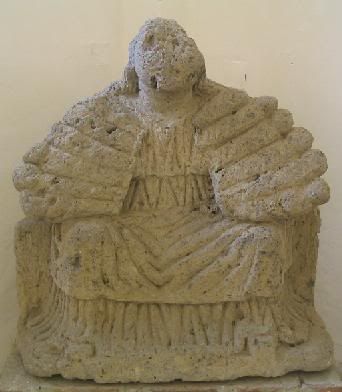
...and that's where Mater Matuta comes in (though these date between the 6th and 2nd centuries BCE -- well before the mosaic). There are several galleries filled with statues of this sort -- I don't remember, but I believe there are over a hundred in the collection. They come from an Italic sanctuary nearby, and were probably ex voto dedications: an expecting mother would vow to set up a statue to the goddess if childbirth went easily. Numbers of children held range from one to twelve (seen here). Jumping forward again to Roman imperial times...
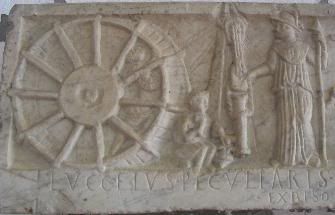
This is a detail of the left half of a relief, showing a man-powered crane lifting a column into place, the goddess Minerva in attendance. The inscription reads:
Lucceius Speculiaris redemptor prosceni fecit ex biso
"Lucceius Speculiaris the theater contractor made (this) after a vision."
I didn't have time to see the iuvilas-inscriptions (in Oscan), which are by request only. In any case, I plan to come back and spend at least a day, maybe a week. I spent the rest of the day wandering up and down practically every street in the center of Capua. It's rich in spolia, that is, ancient inscriptions and architectural bits reused in later buildings. For example:

The church of S. Angelo in Audoaldis, which dates from the 11th c (CE). At the base of the tower you can see three or four reused Roman funerary stones.
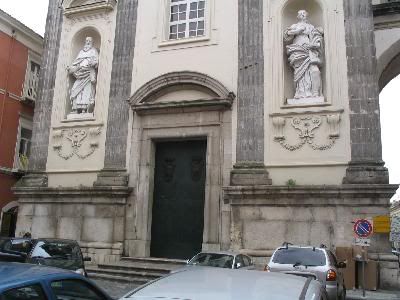
The church of the Annunziata. Those familiar-looking blocks that form the base (and not only in front -- they stretch around the entirety of the rather long structure) come from the Roman amphitheater in S. Maria Capua Vetere. In fact, the entire modern city of Capua was built from the remains of that amphitheater. Indeed, no one in Europe has cut building stone since the fall of the Roman Empire. It's more efficient to go down to your friendly neighborhood Roman ruins and take what you need, plus it saves the environment by reducing the need for ugly quarries. Everybody's happy...
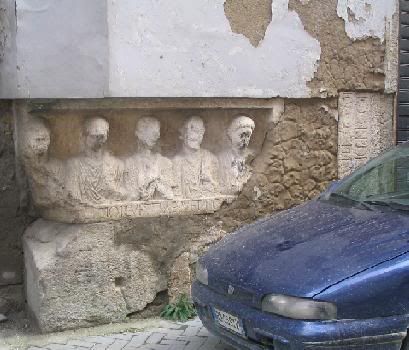
There are at least five pieces of spolia in this picture. Can you find them all? As the sun sets, farewell to Capua for now. Watch this space for exciting updates over the next several days.
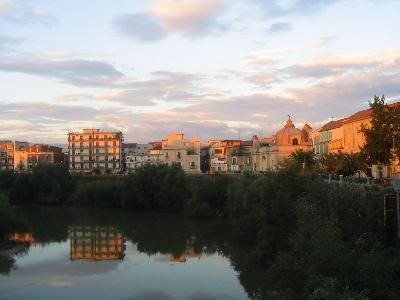

No comments:
Post a Comment